Curtis' Goldenrod, Mountain Decumbent Goldenrod - Solidago curtisii
|
Solidago curtisii - Curtis' Goldenrod, Mountain Decumbent Goldenrod. Synonym: Solidago caesia var. curtisii
Solidago is a large genus with around 100 species recognized worldwide, with most of them - around 80 - in North America. There is a Goldenrod found in every state in the United States and in every province in Canada. Curtis' Goldenrod is a species endemic to the central and southern Appalachian area, extending west across the Cumberland Plateau and into the Nashville Basin in Tennessee, and into south Alabama at the southern end of its range. Solidago curtisii has been classified as a variety of the similar S. caesia, which usually is arching and glaucous while Curtis' Goldenrod is usually straight-stemmed with striated stems.
Found in:
AL, GA, KY, MD, MS, NC, PA, SC, TN, VA, WV, GS
Leave comments on Solidago curtisii at this link. | 
Distribution of Solidago curtisii in the United States and Canada:
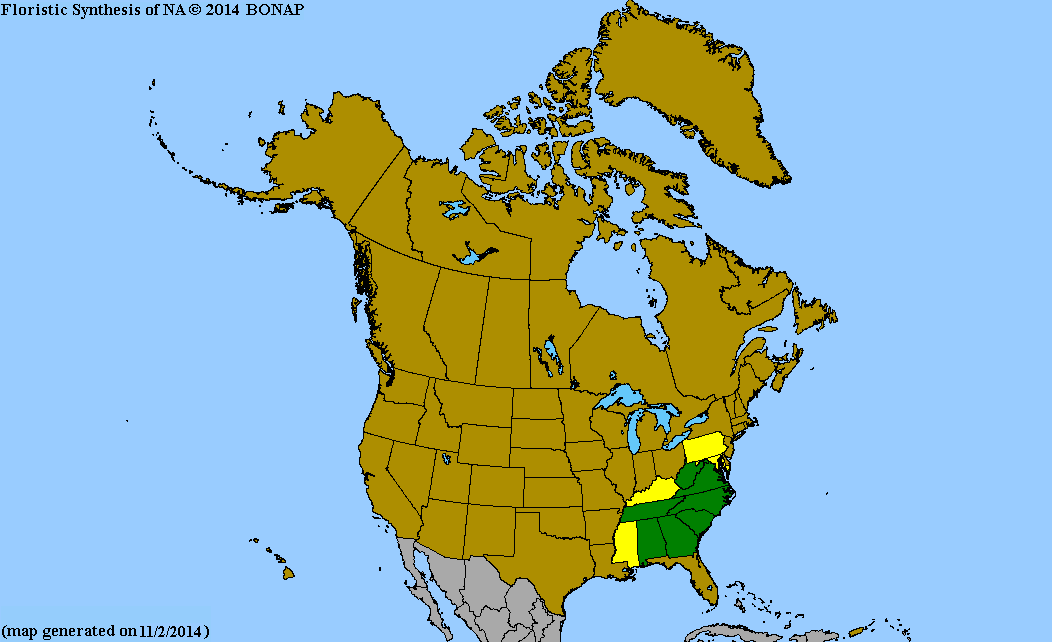
Map courtesy of The Biota of North America Program.
Map color key
Search Our Database: Enter any portion of the Scientific, Common Name, or both.
Do a general Google search of the entire site:
#ad
 Follow USWildflowers on Twitter
| | Site: Hooper's Bald, Graham County, NC Date: 2017-August-24 | Photographer: Gerald C. Williamson
Nikon D7000
Tamron SP 90MM f/2.8 AF Macro | | The inflorescences of Curtis' Goldenrod are in axillary and terminal arrays of several yellow flower heads each. There may be as many as 800 flowers on a plant. | | 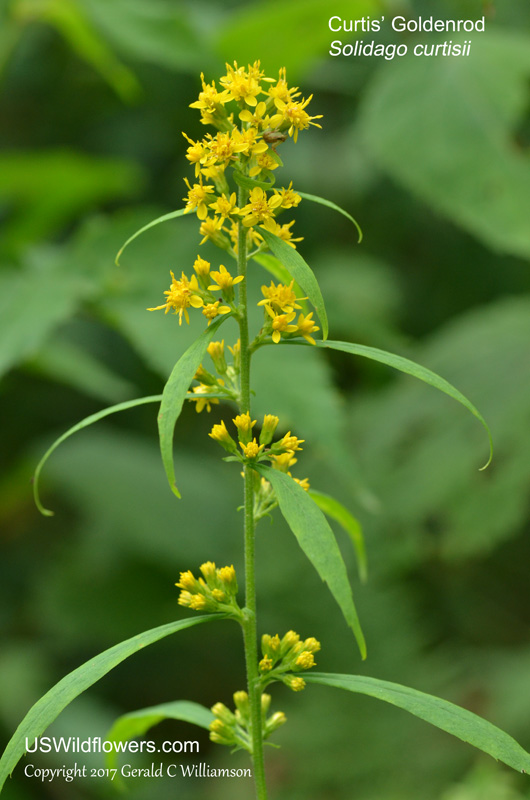
| | Site: Hooper's Bald, Graham County, NC Date: 2017-August-24 | Photographer: Gerald C Williamson
Nikon D7000 | | The individual heads (a compound flower) have 2 to 4 (occasionally as many as 6) ray florets that are up to about 5mm long, and 3 to 7 (up to 9) disc florets that are up to about 3mm long. As with almost all Goldenrods, they are a bright yellow. | | Click on the photo for a larger image
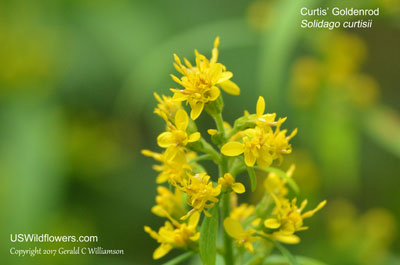
| | Site: Hooper's Bald, Graham County, NC Date: 2017-August-24 | Photographer: Gerald C Williamson
Nikon D7000 | | The leaves of Curtis' Goldenrod alternate on the stem, and 1 to 4 stems may arise from the woody root stock. The stem may be unbranched, or may have several lateral branches. If I have identified this plant correctly, it appears that branches as well as inflorescences are axillary. The plant grows to 3' or 3.5' tall. | | Click on the photo for a larger image
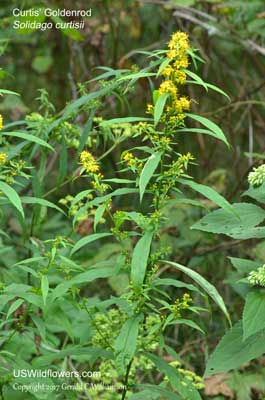
| | Site: Hooper's Bald, Graham County, NC Date: 2017-August-24 | Photographer: Gerald C Williamson
Nikon D7000 | The plant has basal leaves which have withered by the time the plant flowers. The lower- and mid-stem leaves are on short petioles or are sessile; upper leaves are sessile. The lanceolate or elliptic blades are much longer than wide. The lower- and mid-stem leaves are serrate; the upper leaves may be sparsely serrate to entire. The leaf blades are glabrous to moderately hairy. Some authorities consider plants with moderately hairy to be Solidago curtisii var. pubens, or alternatively the varieties are var. curtisii and var. flaccidifolia.
The stems of Solidago curtisii are usually green, although occasionally they will be purple (S. caesia will be more likely to have purple stems). The stems are striated and not glaucous; those of S. caesia are usually glaucous. | | Click on the photo for a larger image
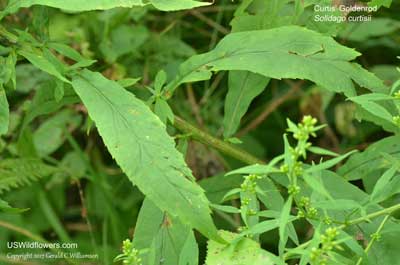
|
References used for identification and information:
|
|
| |
| #ad
|
|






